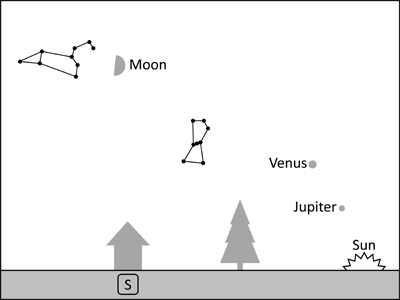Last year, Tim and Stephanie Slater phoned me up and invited me to be part of an astronomy education research group they were putting together. I was flattered to be part of the Conceptual Astronomy and Physics Education Research (CAPER) team! Especially when I learned who else I’d be working with. I mean, check out the bio’s of these remarkable astronomy educators. I’ve got to admit, I was a bit overwhelmed by their experience (and publication records.)
We got together at a conference we all attended and meet via telecon regularly but this week was special. A group of us — Tim, Stephanie, Julia, Sharon, Kendra, Inge, Eric and I — got together in Colorado for an intensive, 3-day astronomy education research retreat.
Wow.
We talked about this. We argued about that. We thought about this and that. And it was all about teaching and learning astronomy. Not marking or Little League or home renovations or all those other things that eat up our time. Just astronomy education. What a treat!
By the end of the 3 days, we’d developed a research project, from concept tests and interview protocols to IRB letters and pre/post testing schedules. And what’s it all about?
Understanding certain concepts in introductory astronomy, like the causes of the seasons and the phases of the Moon, requires students to visualize the Earth, Moon and Sun, from both Earth-centered and Sun-centered points-of-view. It seems likely, then, that students with better spatial reasoning abilities will be more successful. There are already standard tests of spatial reasoning. And there are a number of assessments of astronomy knowledge, augmented by the one’s we created this week. Add some pre-/post-testing and a dash of correlation coefficient and see what comes out.
One of the concepts we want to explore is the motion of the sky, so we made up an assessment using this diagram. (I’m using this example because *I* created this diagram with Powerpoint and a little help from Star Walk.)

Looking south at sunset. So many questions we can ask...
Like I said earlier, I was pretty overwhelmed by the calibre of the other people in the group. So it was very gratifying, good for my ego, to be able to contribute and realize that we all have strengths. Maybe that’s the humble Canadian coming through. I’m excited about what we’ve done and what we’ll be doing. And proud I have knowledge and experience to share.
I can’t wait to see what we find. Stay tuned!

Sounds like a fantastic experience! It is so exhilarating to talk physics and astronomy education with folks that are equally geeked about teaching and learning. Teaching astronomy has got to be one of the best jobs in the universe, and I feel so lucky to be in a field with such great community. Thanks for sharing!
And I think your diagram looks great. :)
Thanks, Carrie. Both the people and setting aside the time to do nothing else made this retreat so rewarding. Maybe its like peer instruction in our classrooms: we learn when we have prolonged, engaging, thoughtful conversations with our peers.
I hope we’ll have that opportunity at a future astronomy conf like #ASP2011.
Thanks for posting your thoughts, Peter. I still need to finish the little edits I was doing to the elementary interviews and get those in the dropbox. What a whirlwind that meeting was.
See you at ASP2011 meeting!
Astronomy is quite interesting to know. Thanks for much interesting bearing post on it.